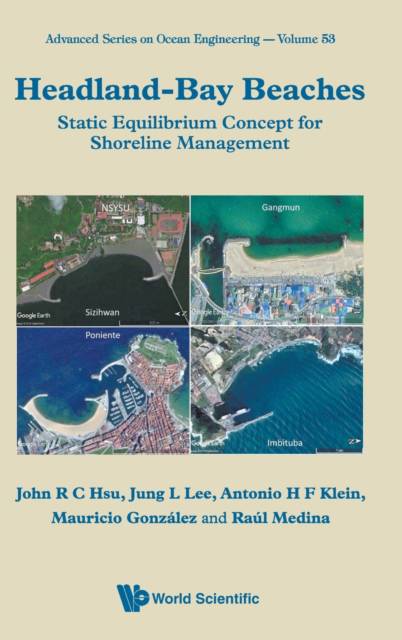
- Afhalen na 1 uur in een winkel met voorraad
- Gratis thuislevering in België vanaf € 30
- Ruim aanbod met 7 miljoen producten
- Afhalen na 1 uur in een winkel met voorraad
- Gratis thuislevering in België vanaf € 30
- Ruim aanbod met 7 miljoen producten
Zoeken
Headland-Bay Beaches: Static Equilibrium Concept for Shoreline Management
Rong-Chung John Hsu, Jung Lyul Lee, Antonio Henrique Da Fontoura Klein, Mauricio Gonzalez, Raul Medina
€ 302,45
+ 604 punten
Omschrijving
Headland-bay beaches (HBBs) are ubiquitous in coastal environment. They exist around the world naturally or artificially as byproduct of engineering project. Though in various shapes, sizes and stability, a HBB in static equilibrium not only is a delight for visitors, but also offers hope for better beach protection, restoration, recreation, and shoreline management. With an empirical parabolic model now available, the stability of an existing HBB can be verified, the future bay shape downdrift of a harbor can be predefined, and a stable HBB can be designed.Although a plethora of books are available for coastal and ocean engineering and geomorphology, only a countable few have covered engineering applications of HBBs. On the contrary, this book with focus on the HBBs in static equilibrium aims to offer a comprehensive volume with knowledge and applications for coastal scientists, engineers, managers, students, and the general public interested in HBBs. Useful software tools for HBBs (MEPBAY, MeePaSoL, and SMC) are introduced in the book to aid in applications.The authors have set out to make this book the first unique publication on HBBs, by bringing together the old coastal geomorphic knowledge and new concepts for static bay beaches. This book also provides numerous examples using the static bay beach concept to assist coastal scientists and engineers on planning and pre-design of a stable HBB, and for experimentalists, consultants, and numerical modelers to alleviate the burden of comparing planning options and conducting laborious physical experiments on coastal sedimentation problems.
Specificaties
Betrokkenen
- Auteur(s):
- Uitgeverij:
Inhoud
- Aantal bladzijden:
- 812
- Taal:
- Engels
- Reeks:
- Reeksnummer:
- nr. 53
Eigenschappen
- Productcode (EAN):
- 9789811227714
- Verschijningsdatum:
- 28/06/2021
- Uitvoering:
- Hardcover
- Formaat:
- Genaaid
- Afmetingen:
- 152 mm x 229 mm
- Gewicht:
- 1242 g

Alleen bij Standaard Boekhandel
+ 604 punten op je klantenkaart van Standaard Boekhandel
Beoordelingen
We publiceren alleen reviews die voldoen aan de voorwaarden voor reviews. Bekijk onze voorwaarden voor reviews.








